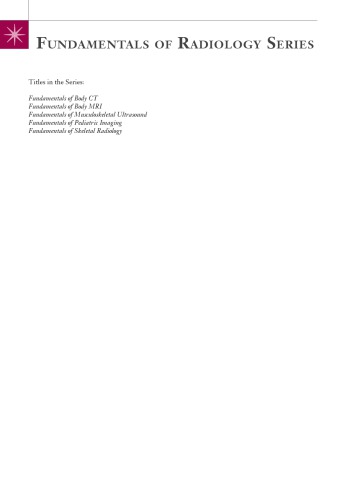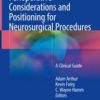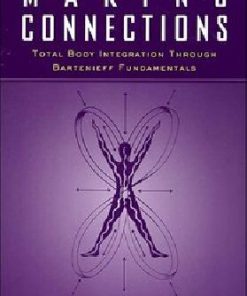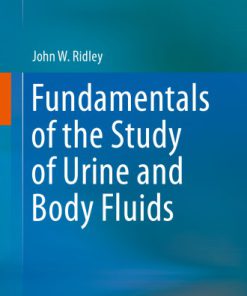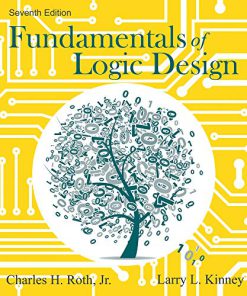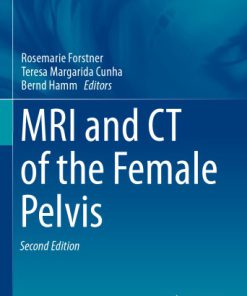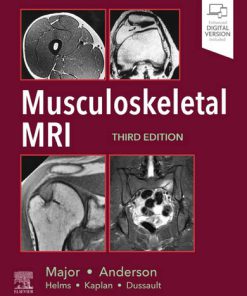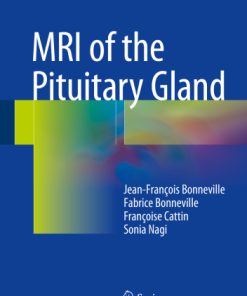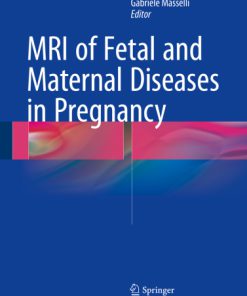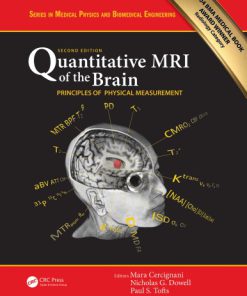Fundamentals of Body MRI 2nd Edition by Christopher Roth, Sandeep Deshmukh ISBN 0323448984 9780323448987
$50.00 Original price was: $50.00.$25.00Current price is: $25.00.
Fundamentals of Body MRI 2nd Edition by Christopher G. Roth, Sandeep Deshmukh – Ebook PDF Instant Download/Delivery: 0323448984, 9780323448987
Full download Fundamentals of Body MRI 2nd Edition after payment
Product details:
ISBN 10: 0323448984
ISBN 13: 9780323448987
Author: Christopher G. Roth, Sandeep Deshmukh
Effectively perform and interpret MR body imaging with this concise, highly illustrated resource! Fundamentals of Body MRI, 2nd Edition, by Drs. Christopher Roth and Sandeep Deshmukh, covers the essential concepts residents, fellows, and practitioners need to know, laying a solid foundation for understanding the basics and making accurate diagnoses. This easy-to-use title in the Fundamentals of Radiology series covers all common body MR imaging indications and conditions, while providing new content on physics and noninterpretive skills with an emphasis on quality and safety.
- More than 1,400 detailed MRI images and 100 algorithms and diagrams highlight key findings and help you grasp visual nuances of images you’re likely to encounter.
- All common body MR imaging content is covered, along with discussion of how physics, techniques, hardware, and artifacts affect results.
- Consult this title on your favorite e-reader, conduct rapid searches, and adjust font sizes for optimal readability.
- Newly streamlined format helps you retrieve important information more quickly.
- Extensively revised content on the liver, including new MRI contrast agents; new coverage of the spleen; and new safety tips and guidelines keep you up to date.
- New chapters on GI imaging, the prostate, and the male genitourinary system make this a one-stop reference to address the full range of body MRI.
Fundamentals of Body MRI 2nd Table of contents:
Chapter 1. Introduction and Physics of Body MRI
▪ Magnetic Resonance Imaging: What is the Objective?
▪ Magnetism: How is the Human Body Magnetized?
▪ The Components
▪ Pulse Sequences
▪ Tissue Contrast
▪ The Pulse Sequence Scheme
▪ Optimizing Body MRI
▪ MRI Safety
▪ Summary
Chapter 2. MRI of Focal Liver Lesions
▪ Introduction
▪ Normal Features
▪ Focal Lesions
Chapter 3. MRI of Diffuse Liver Disease
▪ Introduction
▪ Geographic or Segmental Lesions
▪ Diffuse Abnormalities
Chapter 4. MRI of the Gallbladder and Biliary System
▪ Gallbladder
▪ Biliary Tree
▪ Biliary Obstruction
▪ Inflammatory Etiologies
▪ Malignant Etiologies
Chapter 5. MRI of the Pancreas and Spleen
▪ Pancreas
▪ Imaging Techniques
▪ Congenital/Developmental Anomalies of the Pancreas
▪ Diffuse Pancreatic Disorders
▪ Genetic Disorders
▪ Focal Pancreatic Lesions
▪ Spleen
▪ Imaging Technique
▪ Congenital/Developmental Anomalies of the Spleen
▪ Benign Lesions of the Spleen
▪ Intermediate Lesions
▪ Malignant Lesions of the Spleen
Chapter 6. MRI of the Kidneys, Ureters, and Urinary Bladder
▪ Introduction
▪ Technique
▪ Interpretation
▪ Kidneys
▪ Solid Lesions with Ball Morphology
▪ Solid Lesions with Bean Morphology
▪ Segmental ± Diffuse Lesions
▪ Diffuse Lesions
▪ Other Unilateral Disorders
▪ Diffuse Bilateral Disorders
▪ Bladder Neoplasms
▪ Nonneoplastic Conditions of the Urinary Bladder
Chapter 7. MRI of the Adrenal Glands and Retroperitoneum
▪ Introduction
▪ Technique
▪ Interpretation
▪ Adrenal Glands
▪ Retroperitoneum
Chapter 8. MRI of the Gastrointestinal System
▪ Introduction
▪ Small Bowel
▪ Technical Considerations
▪ Normal Appearance
▪ Inflammatory Etiologies
▪ Crohn’s Disease
▪ Celiac Disease
▪ Neoplastic Etiologies
▪ Colorectum
▪ Technical Considerations
▪ Normal Appearance
▪ Common Focal Abnormalities
▪ Common Diffuse Abnormalities
Chapter 9. MRI of the Uterus, Cervix, and Vagina
▪ Introduction
▪ Uterus
▪ Cervix and Vagina
Chapter 10. MRI of the Ovaries and Adnexa
▪ Introduction
▪ Miscellaneous
Chapter 11. MRI of the Prostate and Male Genitourinary System
▪ Prostate
▪ Imaging Techniques
▪ Congenital/Developmental Processes
▪ Diffuse Prostatic Processes
▪ Focal Prostatic Processes
▪ Penis
▪ Imaging Technique
▪ Benign Penile Processes
▪ Penile Malignancies
▪ Scrotum and Contents
▪ Imaging Technique
▪ Congenital/Developmental Processes of the Scrotum And Contents
▪ Benign Processes of the Scrotum and Contents
▪ Testicular Adrenal Rest Tumors (Tarts)
▪ Leydig Cell Hyperplasia
▪ Lipoma
▪ Adenomatoid Tumor
▪ Sperm Granulomas
▪ Leiomyoma
▪ Papillary Cystadenoma
▪ Fibrous Pseudotumor
▪ Sclerosing Lipogranuloma
▪ Epididymitis and Epididymoorchitis
▪ Torsion
▪ Infarction
▪ Trauma
▪ Spermatic Cord Lipoma
▪ Malignant Processes of the Scrotum and Contents
People also search for Fundamentals of Body MRI 2nd:
fundamentals of body mri 2nd
fundamentals of body mri 2nd edition
what does a full body mri detect
reasons for full body mri
is there a full body mri
Tags:
Christopher Roth,Sandeep Deshmukh,Fundamentals,Body MRI
You may also like…
Arts - Performing Arts
Fiction - American Fiction
Computers - Programming
Medicine - Others
MRI Of Fetal And Maternal Diseases In Pregnancy Gabriele Masselli


